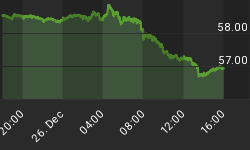These analyses are researched by D.Sornette and W.-X.Zhou.
Based on a theory of cooperative herding and imitation working both in bullish as well as in bearish regimes that we have developed in a series of papers, we have detected the existence of a clear signature of herding in the decay of the US S&P500 index since August 2000 with high statistical significance, in the form of strong log-periodic components. Since August 2000, the USA as well as most other western markets have depreciated almost in synchrony according to complex patterns of drops and local rebounds. We have proposed to describe this phenomenon using the concept of a log-periodic power law (LPPL) antibubble, characterizing behavioural herding between investors leading to a competition between positive and negative feedbacks in the pricing process. This work was motivated by the similitude between the evolutions of Nikkei 225 and S&P 500 Index.

Fig. 1 shows 9 years of the evolution of the Japanese Nikkei index and almost 8 years of the USA S&P500 index, compared to each other after a translation described in the update of September 17, 2003 has been performed. The years are written on the horizontal axis (and marked by a tick on the axis where January 1 of that year occurs). This figure illustrates an analogy noted by several observers that our work has made quantitative. The oscillations with decreasing frequency which decorate an overall decrease of the stock markets are observed only in very special stock markets regimes, that we have terms log-periodic "anti-bubbles". By analyzing the mathematical structure of these oscillations, we quantify them into one (or several) mathematical formula(s) that can then be extrapolated to provide the prediction shown in the following figures. Note that extrapolating is often a risky endeavour and needs to be justified. In our case, the extrapolations, which give the forecasts, are based on the belief that these equations offered below embody the major forces in the market at the macroscopic scale. This leads to the possibility of describing several probable scenarios. We do not believe in the existence of deterministic trajectories but we aim at targeting the most probable future paths.
Please refer to the following paper for a detailed description: D. Sornette and W.-X. Zhou, The US 2000-2002 Market Descent: How Much Longer and Deeper? Quantitative Finance 2 (6), 468-481 (2002) (e-print at http://arXiv.org/abs/cond-mat/0209065).
Why Stock Markets Crash: For a general presentation of the underlying concepts, theory, empirical tests and concrete applications, with a discussion of previous predictions, see the recent book, Why Stock Markets Crash.
Several of our readers have suggested to us that we should analyze the data from the perspective of foreigners, by converting the market price in euro, British pound or Yen, for instance. This makes sense if one takes into account (1) the artificial and distorting input of the liquidity input by the Fed (which amounts to an effective inflation in dollar terms, hence its depreciation, to be naively simple) and (2) the importance of foreign investors on the US stock markets recycling their surplus dollars. As the figures below show, the picture from the vantage of a foreigner is very different than for an US investor. The tentative conclusion of this new study is that the strong impact of the Fed intervention has perturbed the fingerprints of the antibubble, so that we conclude that it has ended in the US, while maybe in reality the herding bearish-bullish oscillations are still present but are hidden by the distorting feedback actions of the Fed. Then, the antibubble signature could be better observed from the different reference frame of foreigners.

Figure 2 shows the S&P 500 index denominated in EUR from 2000/08/09 to 2004/03/15 and its fits using the first-order and second-order Landau formulas. Recall that we have shown a similar figure in our update on 2003/10/20.

Figure 3 shows the S&P 500 index denominated in GBP from 2000/08/09 to 2004/03/15 and its fits using the first-order and second-order Landau formulas.

Figure 4 shows the S&P 500 index denominated in XAU from 2000/08/09 to 2004/03/15 and its fits using the first-order and second-order Landau formulas.

Figure 5 shows the r.m.s. (root-mean-square, a measure of the quality of the fits) of the fit residuals of the retrospective fits, such as those shown in Figs. 2-4. This figure shows very clearly the change of regime around February 2003, materialized by the jump in r.m.s. in ALL fits. Note that the same occurs for the S&P 500 in US dollar. It is also very interesting to see that the first-order fit and the second-order fit separate around Feb 2003, that is, there is a bifurcation in the data (the bifurcation is slightly earlier for AU).

Figure 6 shows the S&P500 as a function of time from May 2003 to March 15, 2004. The overall upward curvature is symptomatic of an unsustainable super-exponential growth. The wiggly curve is the fit with the log-periodic power law formula, confirming a change of regime into a critical zone. This critical zone characterizes the present time and signals a change of regime. This could be a crash looming or more probably an overall downward trajectory as predicted in figures 2-4, if the dollar stabilizes.
THIS IS AN EXPERIMENT PERFORMED IN REAL TIME AND WE WILL CONTINUE UPDATING EVERY MONTH.
REMEMBER THAT this analysis is for academic purposes only and must not be construed as investment or trading advice.
















